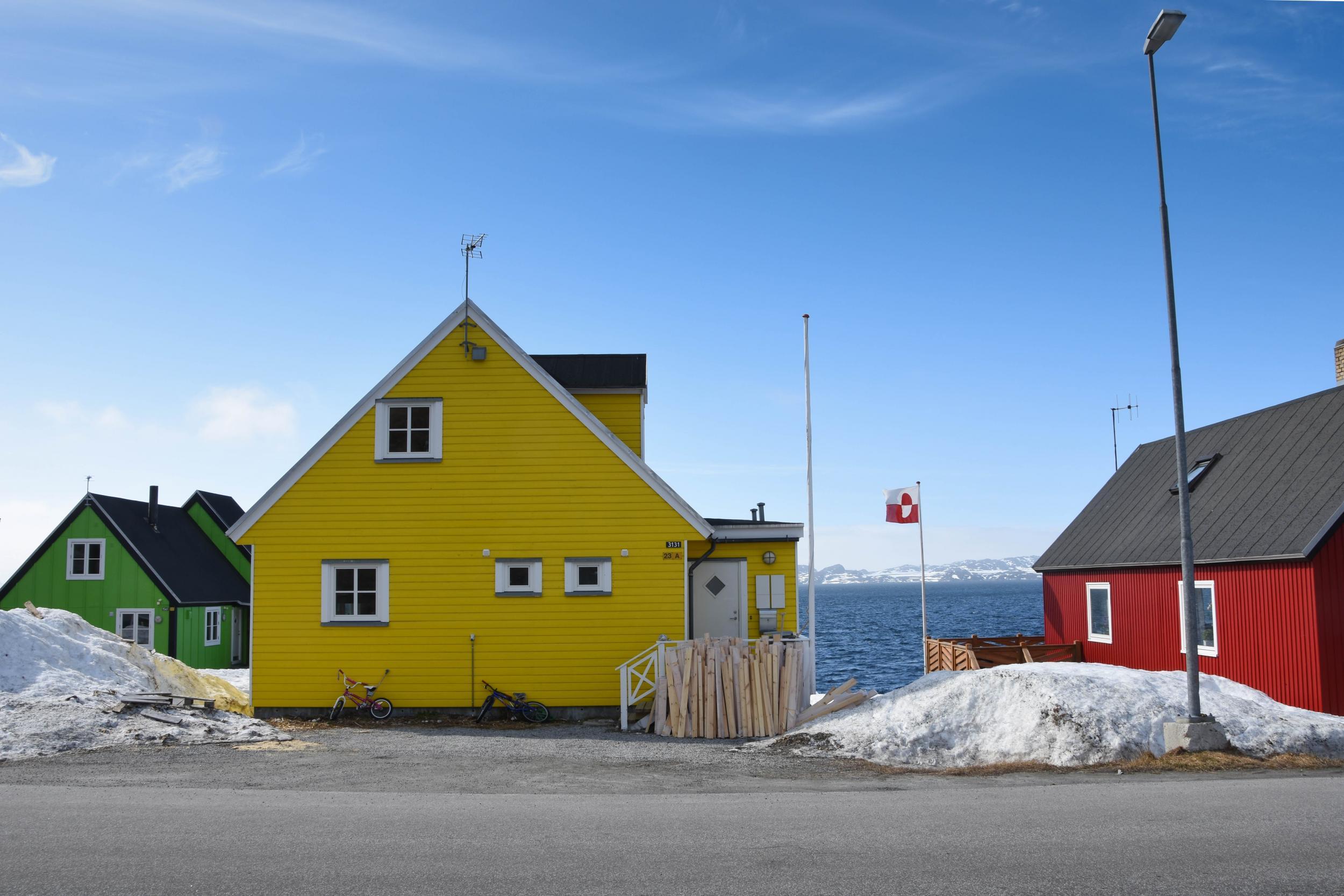Playing with children’s lives: The Greenland youngsters taken from their homes just for a cruel experiment
Helene Thiesen was one of 22 children taken from their families for ‘a better life’ in Denmark, reports Nadine Nielsen in Copenhagen

Helene Thiesen still remembers the new dress and the coat her mother made her. The new suitcase that she had with her when she embarked the ship that was going to take the seven-year-old girl on a two-week long voyage from Greenland to Denmark.
It was supposed to mark the beginning of a better life in a place far away which her mother had described to her as “paradise”. Instead, it inflicted upon her an emotional scar that will never heal.
In May 1951, when Greenland was still a Danish colony, 22 children were sent to Denmark to learn the Danish language and culture. The plan was to give them a better chance in life which would benefit not just themselves, but also their communities once they were back in Greenland. Unfortunately, that was not how it turned out.
Instead, many led lives plagued by unemployment, addictions, and mental illnesses. Today, only six are still alive. Many died young and never formed lasting bonds with their biological families. They have felt rootless: strangers in Denmark, and outsiders in Greenland. For that, Helene and the other victims have now, 70 years later, received an official apology from the Danish government.
As it turned out, they were all part of an experiment orchestrated by the Danish government, Save the Children Denmark and the Danish Red Cross.
Orphans from Greenland were to be placed with Danish families for a year and then sent back to an orphanage in Nuuk where they could bridge the gap between the Danish and the Inuit culture. Yet, most of these children still had their father or mother. They were selected by headteachers and priests who had been asked to find suitable children around the age of six and seven.
“I remember two gentlemen coming to our house in Nuuk, asking my mother which one of her three children was the brightest,” Ms Thiesen, now 76, tells The Independent.
"This was only a couple of months after my father had died from tuberculosis. They only spoke Danish, so they had to come back later with an interpreter.”
Soon after, she and the other 21 Greenlandic children arrived in Denmark. As planned, they spent the first months in a place that Save the Children Denmark used for summer camps.
“We stayed in this dorm room with bunk beds, and we cried ourselves to sleep at night,” Helene recalls.
In the autumn, the children were placed with Danish foster families, and Ms Thiesen moved into the home of a Danish doctor, because she had developed eczema on her elbows and on the back of her knees.
“I really hated being there," she recalls. "The mother just lay in bed all the time, and for Christmas their daughter got this big doll, and I only got a tiny one. I was so jealous and homesick. Our families were never told where we were in Denmark, so we never heard from them. We didn’t understand why they never wrote us, not even a Christmas card.”
You don’t question God’. That’s how the Greenlanders felt about the Danes at the time.
When the eczema cleared up, Ms Thiesen was moved to another foster family, who gave her a good home, but she never stopped longing for her own family in Greenland.
“I didn’t know how long I was going to stay with this family, and I didn’t understand why I was sent away by my mother. I kept asking myself: ‘Why me?’ and I have felt worthless most of my life.”
In September 1952, the children were finally going home again. But only 16 children boarded the ship to Greenland. Six children were in the process of being adopted by their Danish foster families.
Helene was thrilled to go back to Greenland, but her happiness was short-lived.
“I had been looking forward to going back to my family and my hometown, and I ran from the ship to my mother who was waiting at the dock in Nuuk. But when she spoke to me, I realised I no longer understood her. And a moment later I was told to go on a bus that would take me to my new home.”
Her new home was the new orphanage in Nuuk, run by the Danish Red Cross. The 16 children were all placed at the orphanage as it had been decided they should not return to their families after they had just experienced the better living standards in Denmark.
At the orphanage, the children were only allowed to speak Danish, and because they had forgotten how to speak Greenlandic, they were sent to the Danish school, leaving them with no chance of regaining their mother tongue.
The Greenlandic community did not understand them, and they regarded the children at the orphanage as spoilt and pretentious, because they were only socialising with Danes and brought up as Danish children. Even the children with families in Nuuk hardly saw their relatives. Helene only recalls an annual visit from her family in the eight years she stayed in the orphanage.
When her mother remarried and moved to Aasiaat further up the west coast of Greenland, she was convinced she would go with her family, but once again was left disappointed. Her bitterness towards her mother grew. When her mother died years later, she did not attend her funeral.
“I never understood how my mother could give me up like that, and I never forgave her for sending me away. Even after I found out I was part of a social experiment forced upon us by the colonial masters, I still felt betrayed.”
But Ms Thiesen acknowledges that her mother probably was not able to resist the pressure from the Danes.
“Many years later my mum’s sister and her husband explained why none of them had questioned the decision to send me to Denmark: ‘You don’t question God’. That’s how the Greenlanders felt about the Danes at the time.”
When Helene realised she had been part of a social experiment she was shocked. The truth was brought to her in the Nineties by Danish author Tine Bryld who was doing research on Greenlanders in Denmark. Helene was by then living in Denmark with her Danish husband and their two daughters.
“I told Tine Bryld my story and she then went to the Danish National Archives, and when she later rung me to tell me the truth, I couldn’t believe it. How could they have done this to us. They never even thought about the consequences for us children.”
Tine Bryld wrote a book about the experiment that was published in 1998, sending shockwaves through Denmark and Greenland.
Ever since Helene Thiesen learnt the truth, she has been fighting to get an apology from the Danish government. On 8 December she finally got that apology from the Danish prime minister Mette Frederiksen in form of a letter.
“It means everything to me. I have been so bitter and furious because they did this to us, and they should apologise.”
But Helene Thiesen’s life’s work is not finished yet.
“I will try to get a compensation. I think it is only fair.”



Join our commenting forum
Join thought-provoking conversations, follow other Independent readers and see their replies
Comments